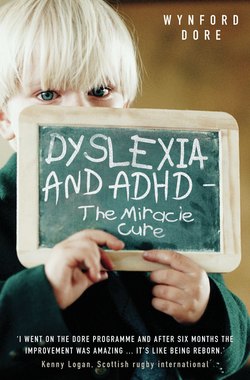Читать книгу Dyslexia and ADHD - The Miracle Cure - Wynford Dore - Страница 16
На сайте Литреса книга снята с продажи.
WHAT IS ADHD?
ОглавлениеADHD was first talked about at the turn of the twentieth century. In 1902, Dr George Still, a physician with an interest in children’s diseases, described to the Royal College of Physicians in London those children who seemed to him to be restless, passionate and apt to get into trouble. Dr Still suggested they had ‘an abnormal defect of moral control’. He wrote an article in The Lancet on the subject. For a while, the condition was linked to the influenza encephalitis pandemic of 1917–18, when it was called Post-Encephalitic Behaviour Disorder.
Over the years the hyperkinetic (increased energy levels) activities were thought to be the predominant feature and the term ‘Hyperkinetic Impulse Disorder’ was coined in the fifties and ‘Hyperactive Child Syndrome’ in the sixties. The Diagnostic and Statistical Manual (DSM) of mental disorders was established by the American Psychiatric Association and is now a standard method recognised internationally to assess various behavioural and mental conditions. Now well established, it described the condition for the first time in 1980 calling it the ‘Hyperkinetic Reaction of Childhood’ disorder. Later, the emphasis fell very much in the direction of attention deficits and the term ADD was first used, defining the disorder as with or without hyperactivity and focusing on inattention and impulsivity. Further revisions defined the term ADHD, its symptoms and cut-off scores for diagnosis.
The current fourth edition of DSM criteria further split the disorder into ADHD (predominantly inattentive), ADHD (predominantly hyperactive) and ADHD combined type (both inattention and hyperactivity). Unfortunately, too little is really understood about the brain-based causes of the condition and experts continue to argue over the underlying disorder.
There are a number of different diagnostic procedures available, none of which is 100 per cent reliable and all, until now, are dependent on subjective opinions. But modern technology is now lending a hand in clarifying the biological basis of this complex disorder. The advent of MRI (Magnetic Resonance Imaging) and functional MRI (which analyses blood flow during brain activity and can identify areas of activity during rest and when performing tasks) has lead to the observation of both structural and functional differences in the brains of ADHD subjects compared to normal subjects. The most consistent findings appear to be a reduced size of the lower mid-line cerebellum (at the back of the brain) and the mid-brain area.
In the past, it has been presumed that the problems lay with the front part of the brain. However, we believe that this is not always the case and that, in fact, in the majority of cases a person is likely to suffer because it is their cerebellum that is not functioning appropriately. Supporting this are several pieces of evidence. We know from a number of studies over the past 20 years that the cerebellum appears to be poorly developed when ADHD is present. We also know from functional scans that the cerebellum is poorly activated in ADHD, whereas in other studies there is inconsistency in the frontal lobe activity ranging from underactivity to normal activity and overactivity.
Recent research at Harvard University in the United States has shown that the drug Ritalin (commonly prescribed for its treatment) appears to increase the activity in this same area of the cerebellum that is found to be poorly developed in ADHD. We also know that ADHD rarely stands alone as a disorder and normally exists side by side with disorders such as dyslexia, developmental co-ordination disorder (dyspraxia) and even autism. This either implies multiple areas of brain disorder or a common area of poor brain functioning impacting on all other separate brain areas involved. Some current independent research into these supposedly separate disorders now suggests a single underlying cerebellar cause. This could easily explain how these different disorders are seen together so often.
